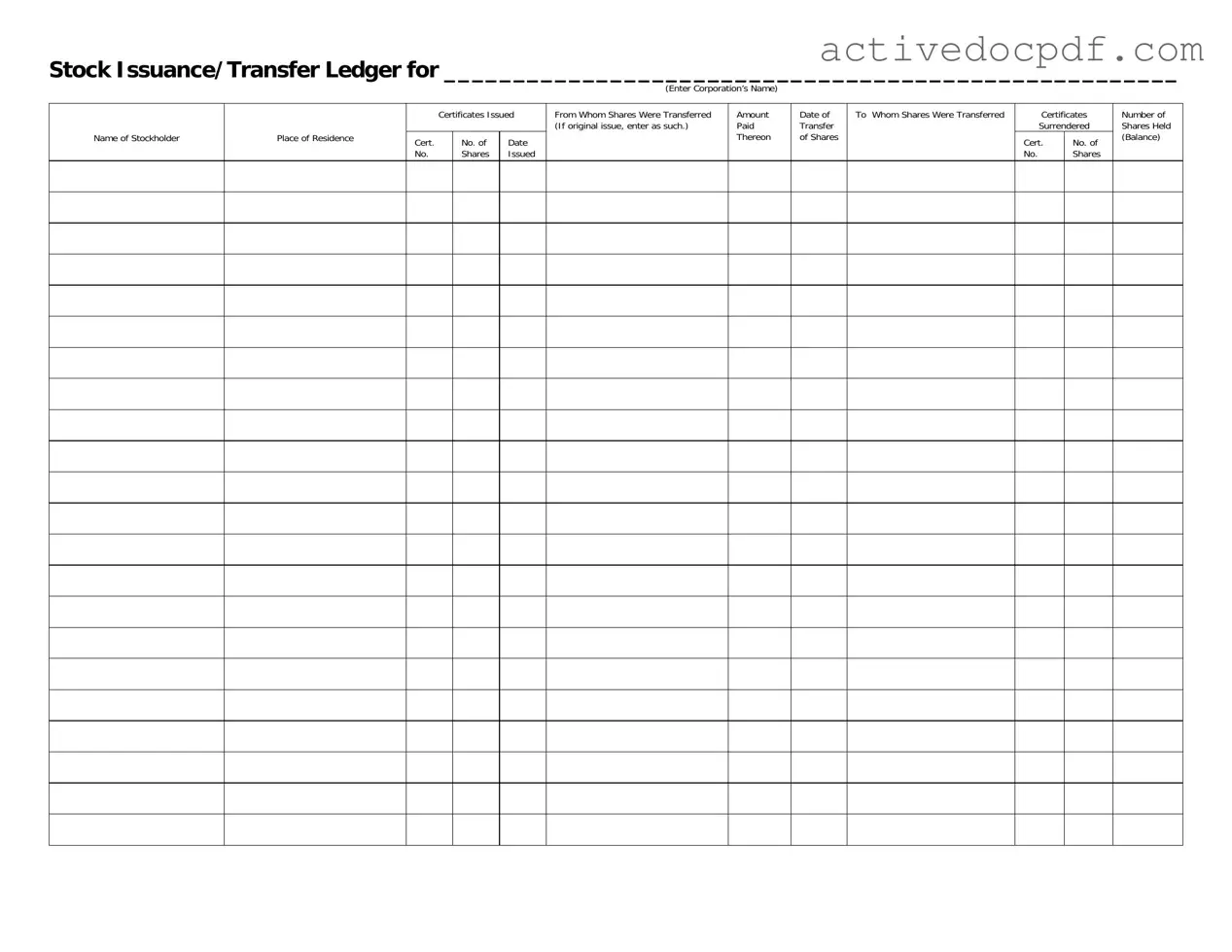The Stock Transfer Ledger form serves as a record-keeping tool for corporations to track the issuance and transfer of stock shares. It provides a comprehensive overview of stockholder transactions, ensuring that all changes in ownership are documented accurately. This form helps maintain transparency and accountability within the corporation, which is essential for compliance with legal requirements.
The form should be completed by authorized personnel within the corporation, typically someone in the finance or legal department. It may also be filled out by a designated stock transfer agent. The individual responsible for completing the form must ensure that all information is accurate and up-to-date, reflecting the current ownership of shares.
Several key pieces of information must be included on the form:
-
Corporation's name
-
Name of the stockholder
-
Place of residence of the stockholder
-
Certificates issued, including certificate numbers and dates
-
Number of shares issued and transferred
-
Amount paid for the shares
-
Date of transfer
-
Name of the person or entity to whom shares were transferred
-
Certificates surrendered, including certificate numbers
-
Number of shares held after the transfer
How does one determine the amount paid for shares?
The amount paid for shares is typically determined by the price set by the corporation at the time of issuance or transfer. This price may vary based on several factors, including market conditions, the corporation's financial health, and any applicable agreements between parties involved. It is crucial to document this amount accurately on the form to reflect the true value of the transaction.
If an error is discovered on the form, it is important to correct it promptly. The corporation should document the correction clearly, indicating the original entry and the corrected information. This ensures that the ledger remains accurate and maintains its integrity. In some cases, it may be necessary to notify affected stockholders of the changes made.
Yes, maintaining an updated Stock Transfer Ledger is essential. An accurate ledger reflects the current ownership of shares and helps prevent disputes among stockholders. It is advisable to update the form immediately after any stock issuance or transfer occurs, ensuring that all transactions are recorded in real time.
How long should the Stock Transfer Ledger be retained?
Corporations should retain the Stock Transfer Ledger for as long as the corporation exists and for a reasonable period afterward, typically at least seven years. This retention period helps in case of audits, legal inquiries, or disputes that may arise regarding stock ownership. It is essential to follow any specific state regulations regarding record retention as well.
Yes, electronic records can be used as long as they comply with applicable laws and regulations. Many corporations opt for electronic systems to manage their stock transfer records, as these systems can offer enhanced security, easier access, and better organization. However, it is vital to ensure that electronic records are backed up and maintained properly to prevent data loss.
